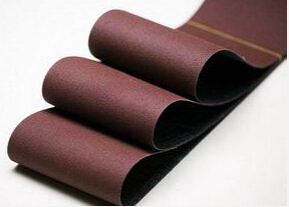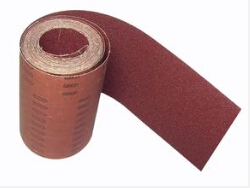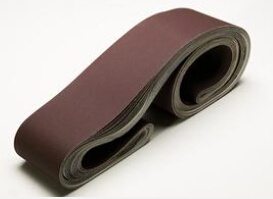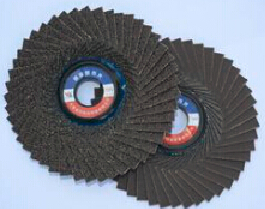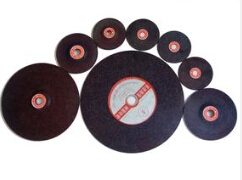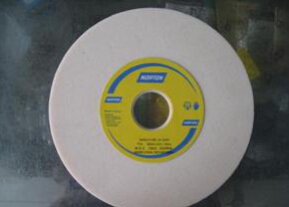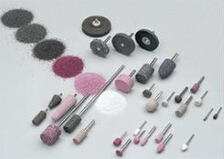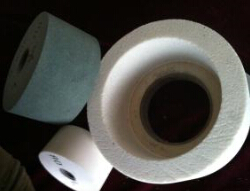Common problems in the manufacturing of resin bonded grinding wheels
Zhongsen Editor 2018-09-07Common problems in the manufacturing of resin bonded grinding wheels
Resin abrasives is an important part of abrasives and one of the important common and important grinding tools in industrial production. In order to promote technical exchanges in the industry and help customers to solve common problems in the manufacturing process of resin grinding wheels, this article mainly introduces common problems in the manufacturing of resin bonded grinding wheels.
I. Analysis of the causes of unstable quality of resin grinding wheel
There are many quality problems in the production process of resin grinding wheels.
Raw material problem
The resin grinding wheel is a complex product made from a variety of main and auxiliary raw materials including filler, reinforcing material, coloring agent etc.
1. about abrasives
At present, the quality of abrasives on the market is uneven, mainly as follows:
(1). The chemical specification of abrasives is often qualified, but also with poor physical properties. It is mainly shown that there is still a gap between bulk density of China and international quality material.
(2). The particle distribution of some abrasives is disordered, which is quite different from the standard specification.
2. In terms of binder, mainly about phenolic resin:
(1). Resin quality stability problems, especially the level of free phenol in the resin.
Excessive free phenol content will accelerate the cracking of the resin after heating and hardening of the resin wheel and affect the strength of the grinding wheel;
(2). The binder’s particle is too thick or too fine:
It is generally believed that the fine grain is benefitial to uniform distribution of the binder. If the grain is too coarse, the molding material is not easily mixed uniformly, which affects the hardness and strength of the grinding wheel. Even for the coarse-grained resin sheet cutting wheel and the cymbal grinding wheel, the size of the binder (resin powder) selected should be finer than 320#.
Manufacturing process of resin grinding wheel
The manufacturing of resin grinding wheels is a highly technical industrial process. There are many problems in the processes of materials mixing, molding, hardening, and processing.
(1). Mixing process: The key of mixing is uniformity.
(2). Molding process: At present, rotating material distribution mechanism is widely applied in domestic market. But due to the limitations of the rotating material distribution mechanism, the employees of some large manufacturing enterprises have no way to operate, which causes the distribution of mixed materials uneven.
(3). Hardening process: This is the most critical production process. There are two factors that easily cause quality problems. One is the temperature difference among the curing oven or the firing kiln is too large. The other is improperly installed furnace.
(4). Manufacture procedure (mainly large-diameter and high-thickness resin grinding wheels): Resin grinding wheels, especially with large diameters and high thicknesses, or with strict dimensional tolerance must be processed after hardening to ensure the geometric size and tolerance.
(5). Apply the production formula and process parameters mechanically.
Equipment tooling problem
(1). Equipment problems: Production equipment is very important for grinding wheel production. Some enterprises lack equipment.
(2). Tooling problems: Some of the smaller resin grinding wheel companies have weak tooling management.
II. How to maintain the quality stability of resin grinding wheel
This paper mainly analyzes how the raw materials with phenolic resin and glass fiber mesh affect the quality stability of the resin grinding wheel.
The quality stability of the resin grinding wheel is most prominent in the following two aspects:
(1). The change of strength and cutting performance of resin grinding wheel within a certain period (under normal temperature and humidity conditions);
(2). The variation of the strength and cutting performance of every batch of grinding wheel in the production cycle (such as different seasons in a year).
The influence of raw materials on the quality stability of resin grinding wheels is mainly reflected in:
(1). Liquid phenolic resin. The fluctuation range of solid content, viscosity, gel time and water solubility of liquid phenolic resin has different degrees of influence on grinding wheels. Therefore, the factories must combine the product performance requirements and its own mixing, forming and hardening process to make a suitable technical index.
(2). Powder phenolic resin.
For powder phenolic resin, the fluctuations of its flow length (fluidity), particle size (grain size, fineness), urotropine (six times) content and gelation time all will affect the quality of the grinding wheel.
(3). Stability of the technical indicators of the mesh
The mesh was originally applied to the resin wheel to increase the strength of the wheel. As the performance of the resin grinding wheel continues to increase, the mesh plays a very important role in the resin grinding wheel, which is mainly manifested in fluctuations in the strength of the grinding wheel, deformation of cutting disc (mainly double-wire grinding wheel), stratification of abrasive disc etc.
The glue content of the mesh has an influence on the strength, viscosity and grinding performance of grinding wheel. In theory, when the production process is stable and the mesh with the higher amount of glue, the grinding wheel will be with the higher strength, the better bonding performance and the more stable cutting performance.
III. The deformation of resin cutting wheel occurs frequently
The deformation of the resin grinding wheel has long troubled the manufacturers. The root of the deformation is the uneven organization in the effective area of the grinding wheel, which in turn causes uneven stress in the hardening process of the product.
Resin grinding wheel manufacturers should focus on solving the uniformity of the mixture, the uniformity of the molding and the stability of the mesh. Only the above three problems can be solved, the deformation problem of the resin grinding wheel (mainly the cutting wheel) will be solved.
IV. The Large cutting films(resin cutting wheels with an outer diameter of more than 300 mm) have appeared in different regions and related manufacturers.
The Large sliced film (resin cutting wheel with an outer diameter of more than 300 mm) is mainly characterized by the fact that when the grinding wheel is cooled after the furnace, and it is obviously soft when bent.
Large cutting film is also a technical problem that has long-term troubled resin abrasive manufacturers. The main reason of large sliced film is the uneven stress of the grinding wheel during the hardening process.
Resin grinding wheel manufacturers should pay attention to the impact of environment and climate on grinding wheel production, rationally select suitable phenolic resin varieties, increase the uniformity of the mixture, and adjust the hardening process in a timely manner to make it more suitable for complete hardening of phenolic resin.
V. The stratification problem of abrasive discs (resin cymbal grinding wheel) is increasing year by year.
About the delamination of abrasive discs, bonding properties of the mesh should be firstly considered. The mesh’s poor compatibility with the phenolic resin, the insufficient of adhesive content, or the excessive fugitive constituent of the mesh all will cause the delamination of the abrasive discs.
Except the mesh, there are two factors which can cause the delamination of the grinding disc. The first is the poor compatibility of the mixture and the lack of fluidity of the powder phenolic resin. The second is the stress rebound of the mesh itself during the hardening of the grinding wheel. Therefore, the manufacturers should pay attention to the mesh in the molding process of the grinding wheels .
VI. The performance degradation problem of resin grinding wheel (time-dependent or aging resistance) long-term troubled wheel factories
Since the phenolic resin used in the resin grinding wheel is a polymer material, its performance will gradually deteriorate with time, until the strength of the grinding wheel is lowered, and the cutting performance is degraded. This performance degradation of the grinding wheel is called aging resistance academically.
There are two common methods in foreign countries to improve the aging resistance performance of resin grinding wheels. The first and most important is to treat the abrasives (deep processing of abrasives such as coating, polymer processing, etc.). The second is to improve phenolic resin’s aging resistance performance.

